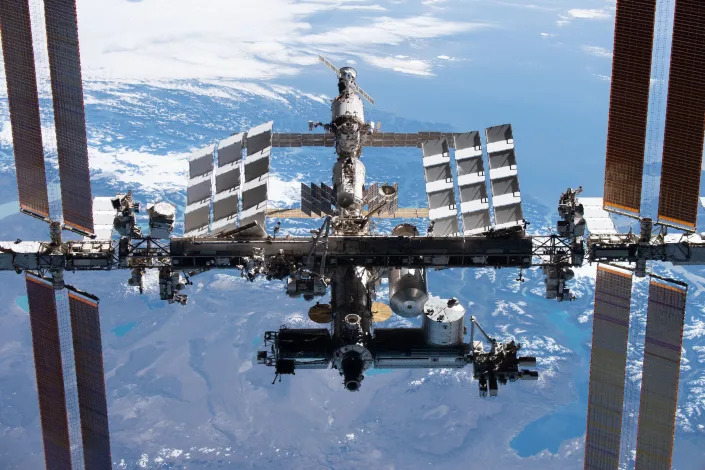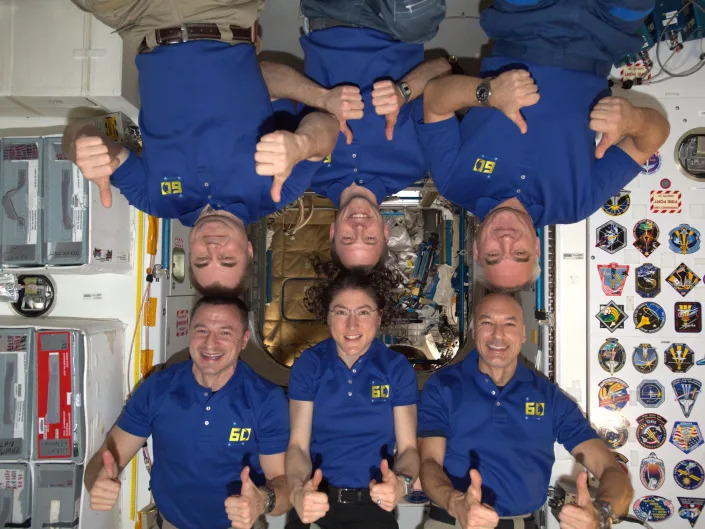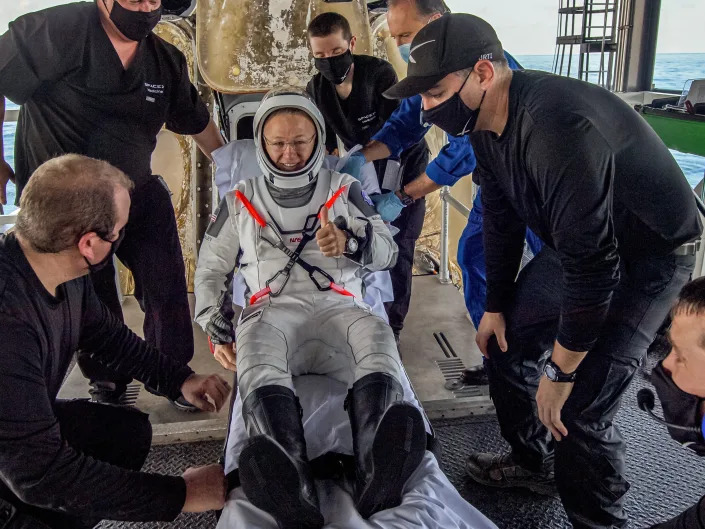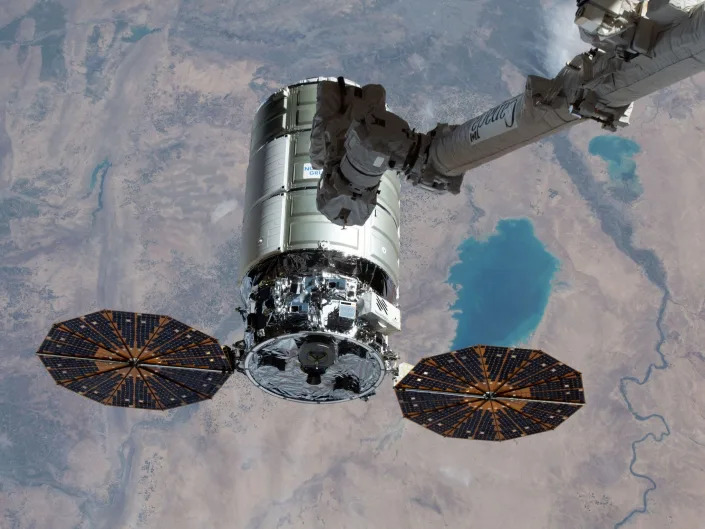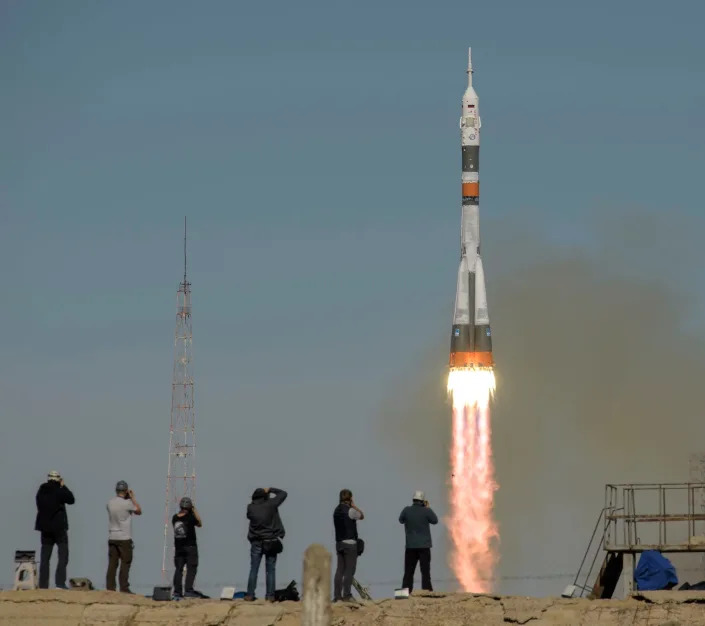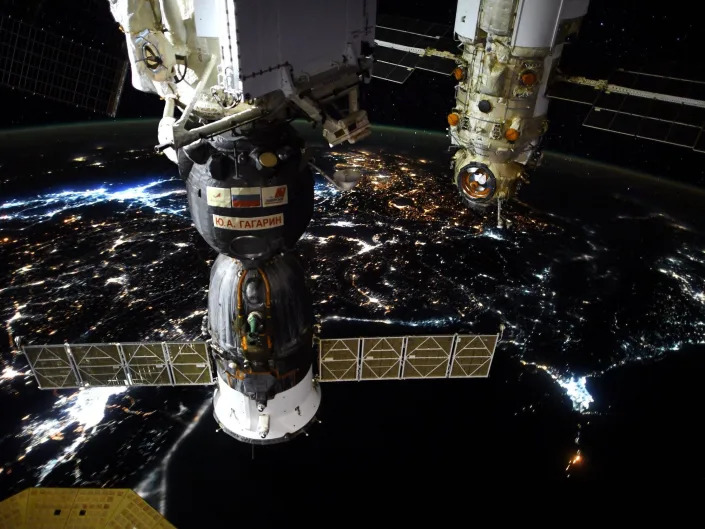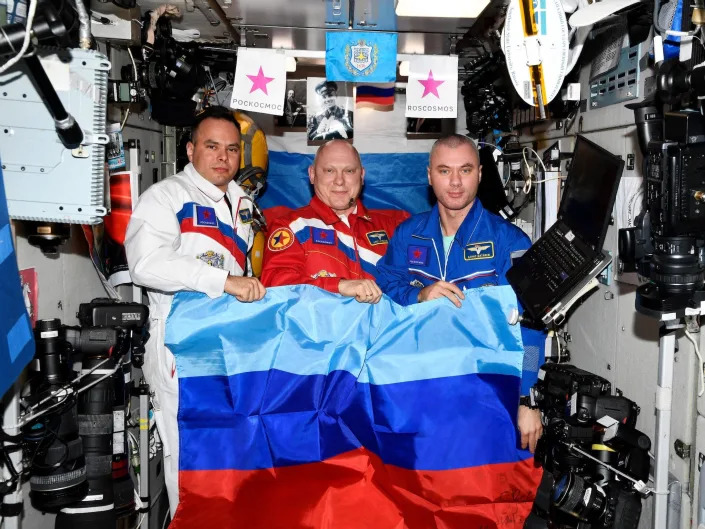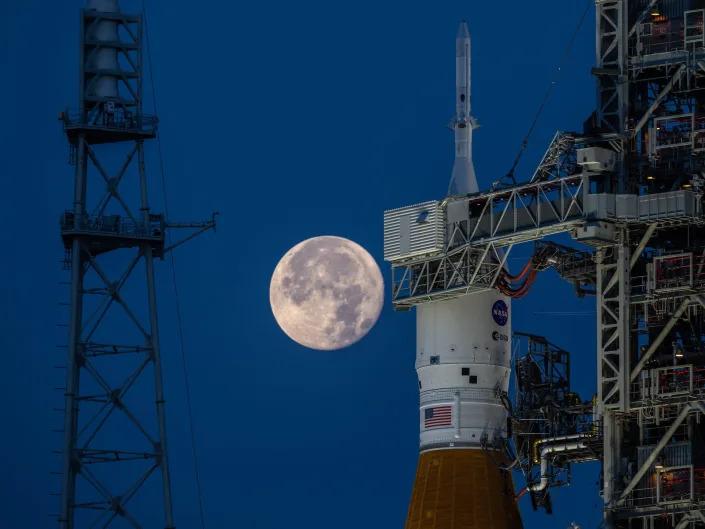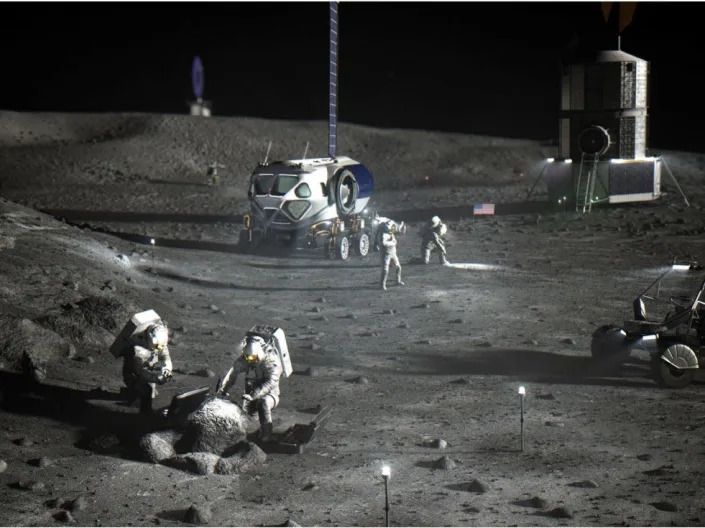Russia and NASA have been on edge for years. Threats to leave the International Space Station are no surprise.
Russia's top space official said Roscosmos is pulling out of the International Space Station after 2024.
NASA and Roscosmos plan to split after the ISS, but it's unclear when and how the partnership will end.
NASA has been learning to fly astronauts and the ISS without Russia, as tensions have escalated.
Russia is talking about abandoning NASA on the International Space Station. Though the news shocked many and inspired a flurry of headlines, the threat is neither new nor particularly threatening.
NASA and Russia's agreement on the ISS is up for renewal in 2024. NASA has already committed to maintaining the station through 2030, but Russia's space agency, Roscosmos, has been dubious about the partnership for years. On Tuesday, the agency's leader made an official-sounding declaration on the matter to President Vladimir Putin.
"Of course, we will fulfill all our obligations to our partners, but the decision about withdrawing from the station after 2024 has been made," Yuri Borisov, the new director general of Roscosmos, told Putin in a meeting, according to The New York Times.
"I think that by this time we will begin to form the Russian orbital station," he added. "Good," Putin said.
While space enthusiasts wrung their hands, the exchange didn't shock space-policy wonks. Borisov's predecessor, Dmitry Rogozin, who Putin fired earlier this month, repeatedly made similar threats.
"This has been seen as coming for the past two or three years," John Logsdon, the founder of George Washington University's Space Policy Institute, told Insider, adding, "It's nothing new."
NASA officials told reporters that Russia had not notified them of any new decisions.
"We've seen this story many times before. Color me skeptical of any immediate changes," Casey Dreier, senior space-policy advisor at The Planetary Society, said on Twitter on Tuesday.
On Wednesday, Kathy Leuders, NASA's head of human spaceflight, told Reuters she'd received word from Russian officials that they intended to keep collaborating on the ISS until completing their own space station. In a Friday statement, translated by Google, Borisov predicted an "avalanche" of technical failures on the Russian segment of the ISS after 2024. At that point, it would be more economical to invest in a new Russian space station, he added.
"Whether it will be in the middle of 2024 or in 2025 — it all depends," Borisov said.
When Russia does leave the ISS, it won't necessarily be a disaster for NASA. The agency has been preparing to operate the station without Russia for nearly a decade, as relations between the two space powers frayed.
"The Russian announcement is not a surprise, and reiterating their current commitment through 2024 is helpful for planning," Scott Pace, director of the Space Policy Institute, said in a written statement shared with Insider. "What comes after 2024 is still very unknown, however, and the real question is when do in-depth technical discussions begin for *how* the transition will be managed (rather then whether there will be a transition)."
NASA's been preparing for a break from Roscosmos for almost a decade
Roscosmos and NASA had a tense partnership from the beginning. Even as the two agencies were building the first parts of the ISS, NASA was making contingency plans. In the late '90s, Russia was behind schedule building the Zvezda Service Module that would be a core component of the station. NASA built a backup module in case Zvezda never came.
A decade later, NASA became reliant on Russian hardware. When the Space Shuttle Program ended in 2011, the US could only fly its astronauts to and from the ISS aboard Russian Soyuz spacecraft.
To dial back that dependence, the Obama administration started funding private development of human-rated spacecraft. The result, SpaceX's Crew Dragon spaceship, now regularly ferries astronauts to and from the ISS.
NASA's remaining reliance on Russia is aboard the ISS itself. The station was constructed for interdependence: Russia's side relies on solar arrays in the Western section for power, and the station can't maintain altitude without regular boosts from Russian Progress spaceships, which fire their boosters to push the station a little higher about once a month.
NASA is learning how to do those "orbital reboost" maneuvers with the Cygnus spacecraft developed by its contractor Northrop Grumman. It conducted a successful test of the maneuver in June, a week after an initial test attempt failed.
It's unclear what a transition to a Russia-free ISS might look like. According to Pace, the chief challenges would be orbital reboosts, replacing Moscow ground support, and figuring out what to do with Russia's modules and other ISS hardware.
"I am confident, without having any specific information, that the US and its partners have thought through what might be done," Logsdon said. Otherwise, they would be "derelict of their duty," he added.
The US-Russia space alliance has become increasingly strained
Over the years, the NASA-Roscosmos partnership has involved public spats. In 2014, Russia announced that it would kick NASA off the ISS by 2020 in retaliation for US sanctions over its invasion of Crimea. The threat never came to fruition.
Last year, a Roscosmos official accused a NASA astronaut of having a mental breakdown and drilling holes into a Soyuz spacecraft in 2018. NASA firmly denied the accusations.
In November, Russia launched a missile at one of its defunct satellites as a weapons test. The explosion scattered thousands of bits of high-speed debris through Earth's orbit, forcing the ISS crew to retreat to their spaceships in case they had to make an emergency exit, and drawing condemnation from NASA.
Tensions escalated when Russia invaded Ukraine. Rogozin, then leading Roscosmos and known for his inflammatory tweets, got into strongly worded Twitter arguments with former NASA astronaut Scott Kelly and Elon Musk, the CEO of SpaceX, a NASA contractor. Rogozin even suggested that Russia might abandon the ISS to crash into Earth.
Cosmonauts have displayed flags and imagery on the ISS supporting the Russian invasion and occupation of Ukraine, invoking a rebuke from NASA officials.
The US and Russia plan to go their own ways after the ISS
Beyond the ISS, US and Russian paths diverge. NASA is funding the development of commercial space stations by three companies — Blue Origin, Nanoracks, and Northrop Grumman. Its plan is to become a customer, renting room and lab space on an orbiting station operated by a private company.
Roscosmos says it's planning its own space station, but hasn't shared much detail.
"You could take that with a grain of salt, given their overall economic situation," Logsdon said.
Both NASA and Roscosmos aim to build new space stations on the moon, but not together.
NASA has established a set of agreements for the new era of lunar exploration, called the Artemis Accords, which 20 other countries signed. Russia and China have not signed the accords. Instead, they've said they plan to build their own base, together, on the lunar surface.
"I think there will be international cooperation among like-minded countries, and the addition of Russia to the International Space Station will be seen as an artifact of the politics of a particular time, and not setting a pattern for the future," Logsdon said.
